SEARCH


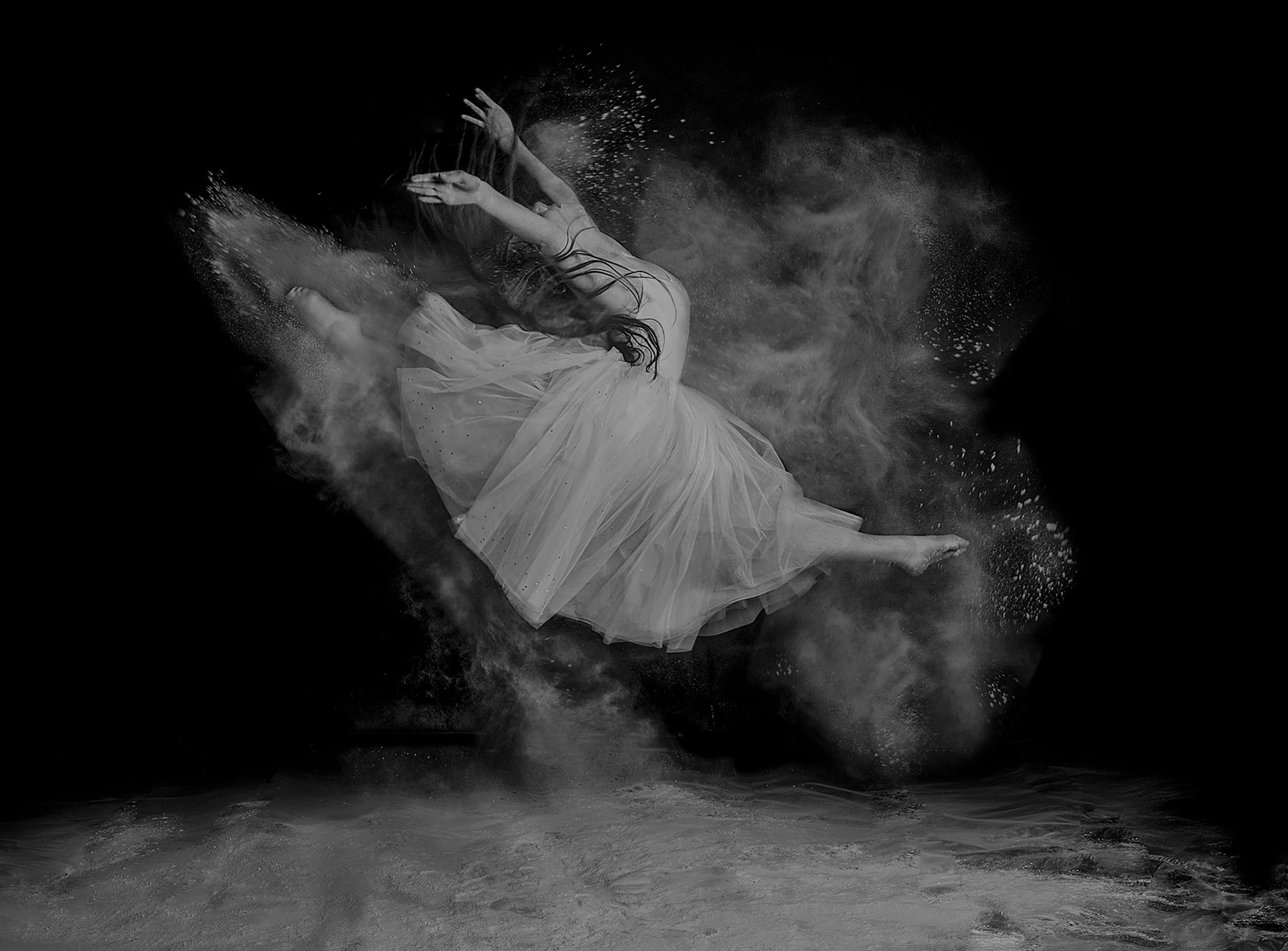
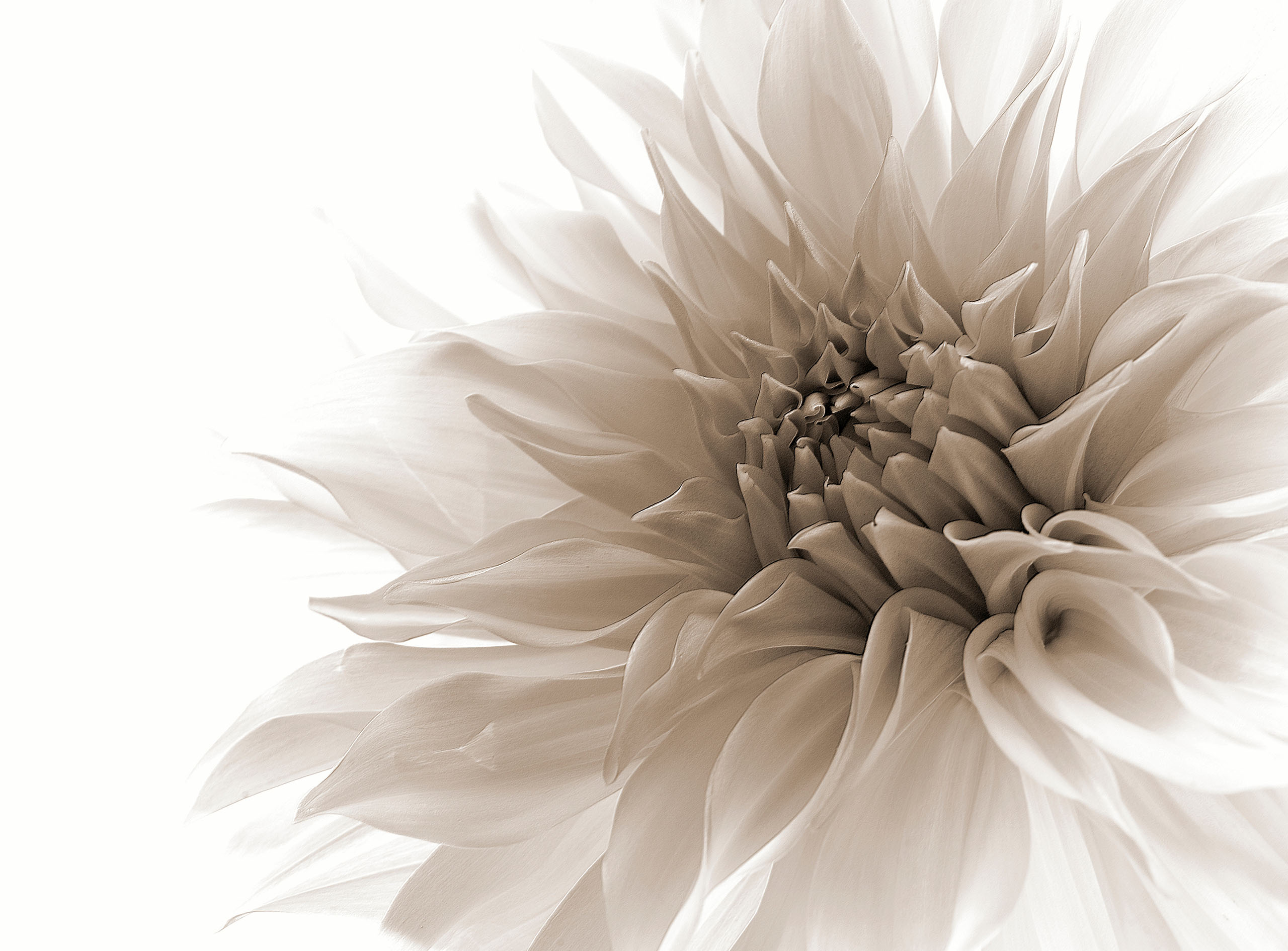
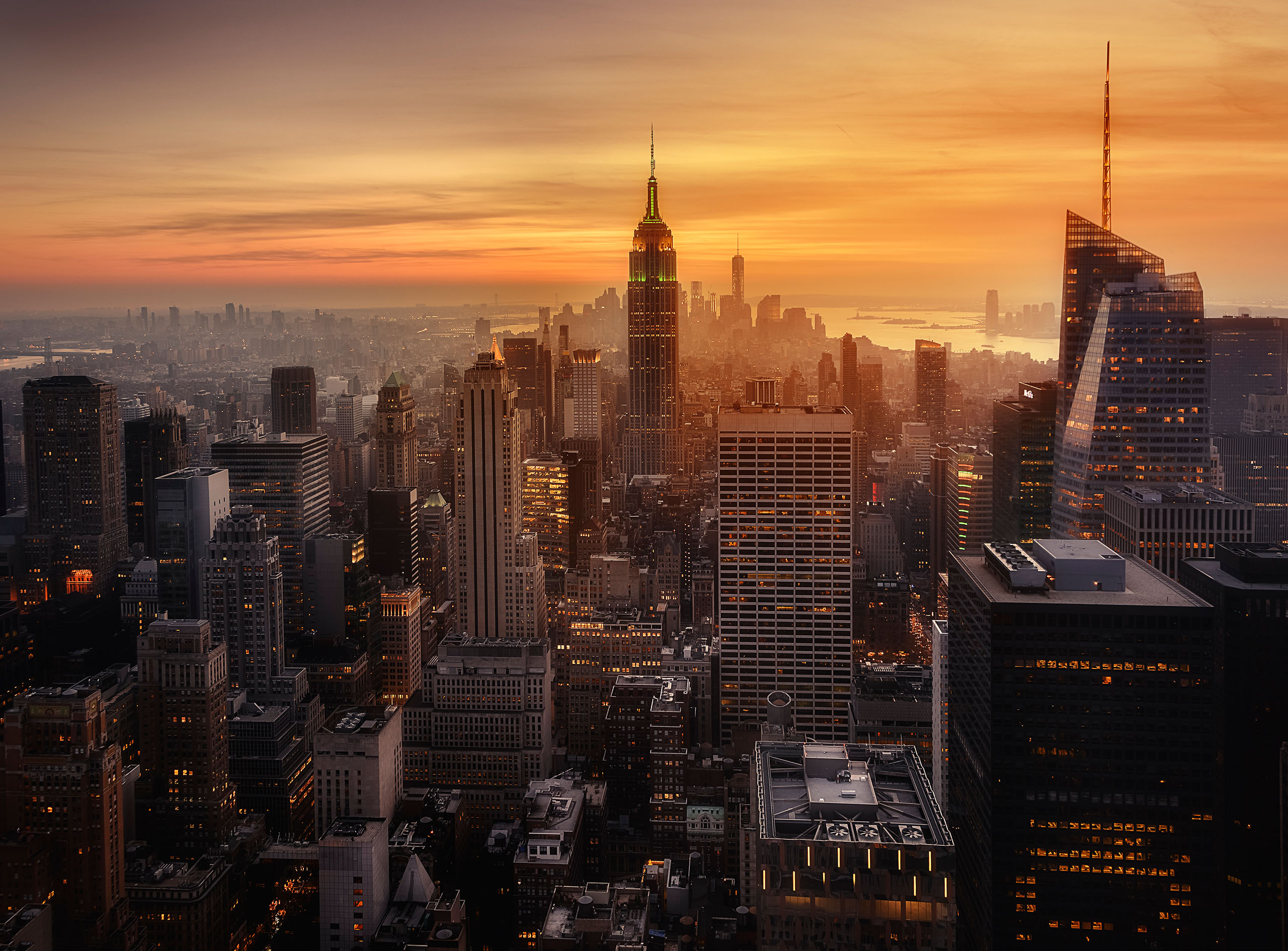
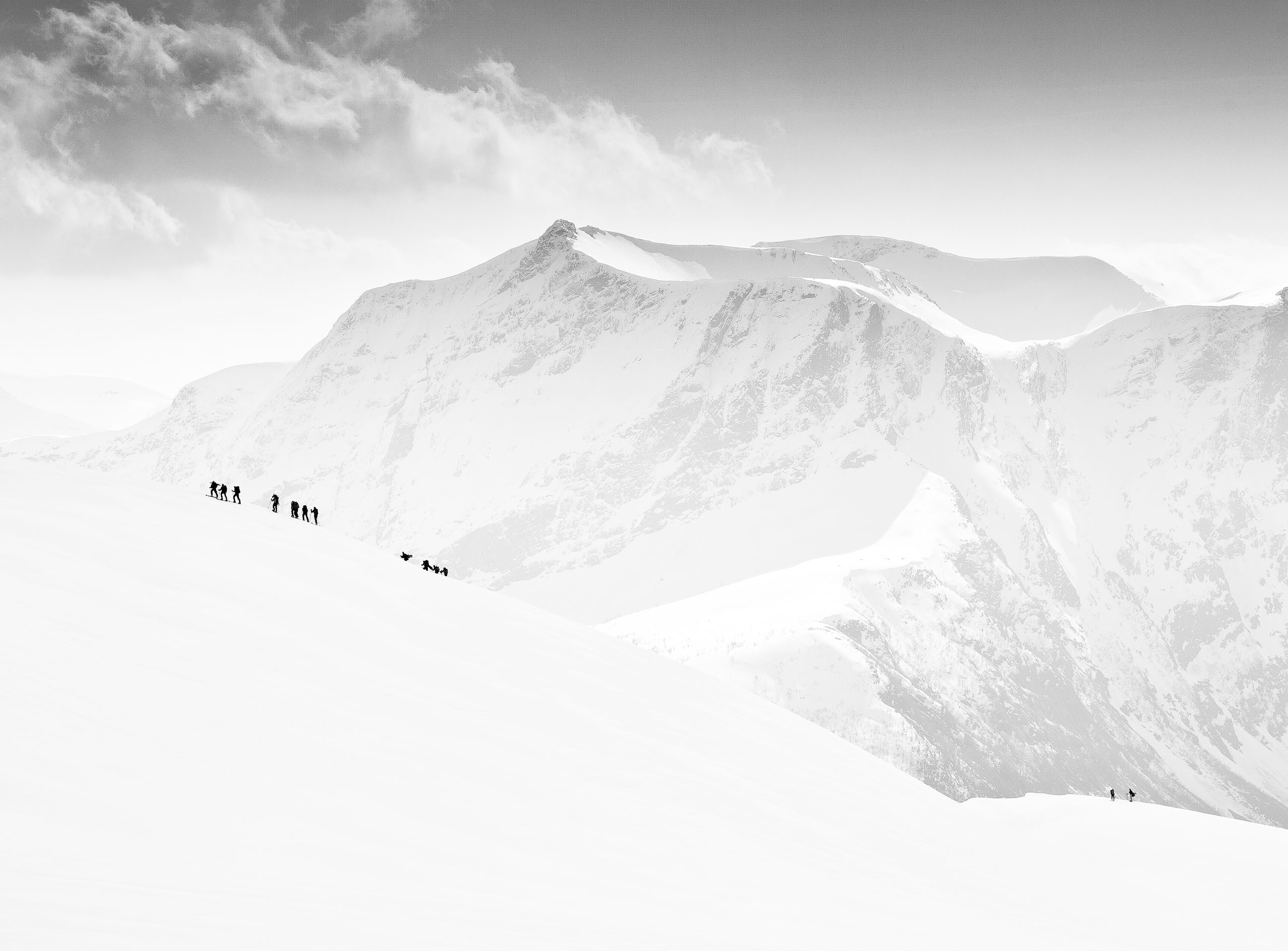
|
|
|
|


by Editor Miro Susta
Edited and published by Yvette Depaepe, the 10th of October 2025
‘Oslo Opera House Deep Blue’ by LIANG CHEN
Our fixation on sharpness and contrast through large apertures has caused us to overlook the alternatives.
Contrast is also an excellent subject for photographic compositions, as it can transform subjects that would otherwise appear ordinary and mundane.
‘Black Cat’ by Davorin Baloh
In photography, contrast refers to the visual difference between various elements in an image, such as brightness, colour, structure, temperature (cold or warm), direction, sharpness, texture, shape and quantity. There is also simultaneous contrast.
‘Paused in the Glow’ by Yohei Kawashima
It is an important design tool for directing the viewer's attention, setting the mood and emphasising details. Higher contrast tends to appear more energetic, while lower contrast appears gentler.
‘The voices of nature...’ by Thierry Dufour’
For example, tonal contrast refers to the brightness of the different elements within an image. If a photo contains extremely bright and dark areas, it is said to have sharp contrast. If there is a wide range of tones, from pure white to pure black, the contrast is medium.
‘Tonality’ by Margareth Perfoncio
Let us explore the following types of contrasts.
· Brightness contrast.
· Color contrast.
· Structural contrast
· Cold-warm contrast.
· Direction contrast.
· Sharpness contrast.
· Texture contrast.
· Shape and perspective contrast.
· Quantity contrast.
· Simultaneous contrast.
BRIGHTENESS CONTRAST …
This applies to the difference between light and dark areas of a picture. A photo with significant differences between its lightest and darkest tones is described as a high-contrast photo.
BETWEEN SHADOWS by Patrick Ems
Tonal contrasts, or contrasts in light and dark, are particularly prominent in black-and-white images. Hard tonal contrasts symbolise strength, power and resilience.
‘Ebony and Ivory’ by Udo Dittmann
Soft, subtle and flat tonal contrasts represent qualities such as softness, gentleness, mildness and friendliness.
‘Curves’ by Rana Jabeen
‘Behind the pillar’ by Greetje van Son
COLOUR CONTRAST ...
This involves combining at least three pure colours that are as far apart as possible on the colour wheel. 'Pure' means that the colours are not toned or only slightly toned with white or shadowed with black. This creates powerful, colourful designs, also referred to as pure colour contrast.
Untitled by Miguel Angel Vidal
This principle is particularly effective when using the primary colours of yellow, red and blue. Green is often added to this combination.
'Pyramids' by Hans-Wolfgang Hawerkamp
'Three colors houses' by Miro Susta
STRUCTURAL CONTRAST…
This is a visual effect created by contrasting elements that differ in structure, shape or arrangement, in order to create tension and draw the viewer's attention.
‘Sunny day’ by Luc Vangindertael (laGrange)
‘Structural waves’ by Francesco Bianchi
‘Kolkata News Paper’ by Subhajit Das
COLD-WARM CONTRAST…
Colours are divided into cool colours, such as violet and green, and warm colours, such as orange and red. Colour temperature can also be used to create three-dimensional depth and a sense of space. Cold colours appear more distant, while warm colours appear closer.
‘Poppy Bloom - Walker Cyn, CA’ by Wanghan Li
‘Face off’ by Mikhail Potapov
DIRECTIONAL CONTRAST…
This is created by lines that run in completely different directions. The larger the surface area, the more pronounced the contrast becomes. The effect depends on how noticeable the lines are.
‘the window and the mirror’ by Gilbert Claes
‘Funtimes In Babylon’ by Laura Mexia
SHARPNESS CONTRAST…
This effect occurs when sharp and blurred parts of an image emphasise each other. Most viewers interpret the sharp and blurred parts of an image as being at different distances. The blurred parts of an image draw the eye to the sharp elements.
‘Haller fantasy’ by Wil Mijer
‘goldfish' by Cesare Sent
TEXTURE CONTRAST…
This occurs when objects with different textures are placed next to each other; for example, smooth surfaces contrasted with rough ones.
Generally speaking, juxtaposing different surface structures can lead to texture contrasts that attract the viewer's attention.
‘Gehry's Pearl’ by Mike Kreiten
‘Layers of land’ by Robin Wechsler
SHAPE AND PERSPECTIVE CONTRAST…
This arises when different types and colours of structures relate to each other. Shapes or shaped parts that are similar in size are always related to each other.
Similar shapes visually complement each other, while contrasting shapes stand out more. Contrasts, i.e. differences, can be influenced by various shape characteristics, such as shape, size and structure.
‘Shapes’ by Arnon Orbach
‘Architecture of blood’ by Jorge Pimenta
QUANTITY CONTRAST…
It is the distinction between two volumes of colour. It is strongest when a small area of colour is juxtaposed with a large area of colour; for example, a red splash on a large, distinct surface of colour. The small area of colour should be positioned within the golden section or at the centre.
‘Castle’ by Miro Susta
SIMULTANEOUS CONTRAST…
The way in which the colours of an object are influenced by the environment in which they are viewed is known as the phenomenon of colour perception. When two colours are viewed side by side, they can appear different and influence each other, creating a visual contrast. Simultaneous contrast is most intense when the two colours are complementary colours. Complementary colours are pairs of colours that are diametrically opposite each other on a colour circle, such as red and green or blue and yellow.
‘Still life with Many Pumpkins’ by UstinaGreen
Finally, we might ask, 'Why is contrast so important?'
Viewer guidance: The human eye is naturally drawn to areas of high contrast, making them important 'eye-catchers'.
Mood and impression: Contrasts can create a certain atmosphere; for example, sharp contrast can create an active and energetic impression, while lower contrast can create a calm and gentle mood.
Recognition of detail: Higher contrast can make details, textures and shapes in an image more visible.
'Sunset' by Joško Šimic
And last but not least, here are two important recommendations for applying and editing contrast.
Use of light: Dramatic lighting conditions and sharp light edges can create natural contrasts; for example, during the golden hour.
Image editing: You can adjust and optimise contrast using image editing programmes such as Adobe Photoshop or Lightroom.
We can claim that photography is not just a technical method for depicting reality, but ideally a fascinating blend of technical skills and artistic vision.
‘Son of the Night’ by Pedro Jarque Krebs
Conrad Hall, American artist said: “CONTRAST IS WHAT MAKES PHOTOGRAPHY INTERESTING”
www.mrsphoto.net
[email protected]
 | Write |
 | Montserrat Alviani PRO Excellent article! Thanks for sharing.
|
 | Angelika Vogel PRO An impressive Portfolio! Congratulations to all! |
 | Nicolae Stefanel Rusu PRO Thank you so
much for this article |
 | Dazhi Cen PRO Thanks. Informative and stunning examples. |
 | Colin Watts PRO Thank you , very useful and full of ideas. |
 | Gerard Valckx PRO A fine article about the contrasts and the variation on that theme.
Contrasts is a part of photography that i like to use its a powerful tool in the post proccesing of our photos. Many thanks for sharing this closer look and with the very fine pictures of several members.
Thanks, Miro and Yvette. Complements!! |
 | Gila Koller PRO thank you for a very interesting article with excellent examples Miro and Yvette. |
 | Udo Dittmann PRO Wonderful, very informative article. I am honored that one of my pictures is part of it. Special thanks go to Yvette and Miro. |
 | Elizabeth Allen CREW Thank you for this excellent article and collection of photos, Miro. Thanks as always to Yvette. |
 | Subhajit Das PRO Great article and stunning images. Very inspiring. Thank you so much Editor Miro Susta and Editor Yvette Dapaepe. It is a great honour for me. Congratulations to all authors. |
 | Eiji Yamamoto PRO Thank you so much for a very interesting and wonderful article with great photos! It's very inspiring! |
 | Wanghan Li PRO Excellent writing with the beautiful and artistic works! Appreciate very much your time, effort and enthusiasm in doing this! Learning and learning. |
 | Margareth Perfoncio PRO Thanks a lot dear Miro and Yvette! |
 | Jane Lyons CREW Thank you Miro. I learned a lot that I did not know about post processing Contrast. The examples you sighted are perfect. Thanks, too, Yvette. |
 | Joško Šimic PRO
Great article and stunning images! Thank for editing one of my photo dear Miro and Yvette ❤️
|
 | Thierry Dufour PRO Thank for editing one of my photo dear Miro and Yvette !!! |
 | Jacob (Jian) Xu CREW Great article and stunning images! Thanks to Miro and Yvette! |
 | Gilbert Claes PRO I read with great interest about the variety of components to which the theme “abstract” can be applied. Wonderful work by Miro to substantiate this with a special selection of photos from the rich and artistic offerings of 1x.com. It is a great pleasure to contribute to this. Many thanks to Yvette and Miro for their excellent work and congratulations to the selection of photographers. |
 | MingLun Tsai PRO Great article and images! Congrats to all artists! Thanks Mirko and Yvette for sharing! |
 | Lus Joosten PRO Great Selection. I like this. |
 | Hans-Wolfgang Hawerkamp PRO much remarkable article with a great selection of work that matches the content. Thanks a lot dear friend Mirko and dear Yvette |
 | Greetje van Son PRO A very interesting article with striking examples. Miro. A pleasure to read ant look at. Thanks a lot for choose one of my photo's for this purpose. And Yvette thanks for publishing. |
by Yvette Depaepe
Published the 8th of October 2025
'Incredible Fog Photography'
For most photographers, nothing compares to shooting in the fog. The mysterious shapes, the silky textures, the ethereal light – it’s a uniquely magical experience, and it’s a recipe for breathtaking photos. Enjoy the best submissions.
The winners with the most votes are:
1st place : Fernando Alves
2nd place : Giuseppe Satriani
3rd place : Uschi Hermann
Congratulations to the winners and honourable mentions.
Thanks to all the participants in the contest 'Incredible Fog Photography'
The currently running theme is 'Reflective surfaces as mirror photography'
Reflections are not limited to a lake or other large surface of water. You can find reflections in a lot of situations. Besides water, I have found reflections in glass, metal, windows, wet surfaces, and mirrors, of course. Sometimes, reflections can be found in the most unexpected places.
This contest will end on Sunday the 19th of October at midnight.
The sooner you upload your submission the more chance you have to gather the most votes.
If you haven't uploaded your photo yet, click here.
Good luck to all the participants.
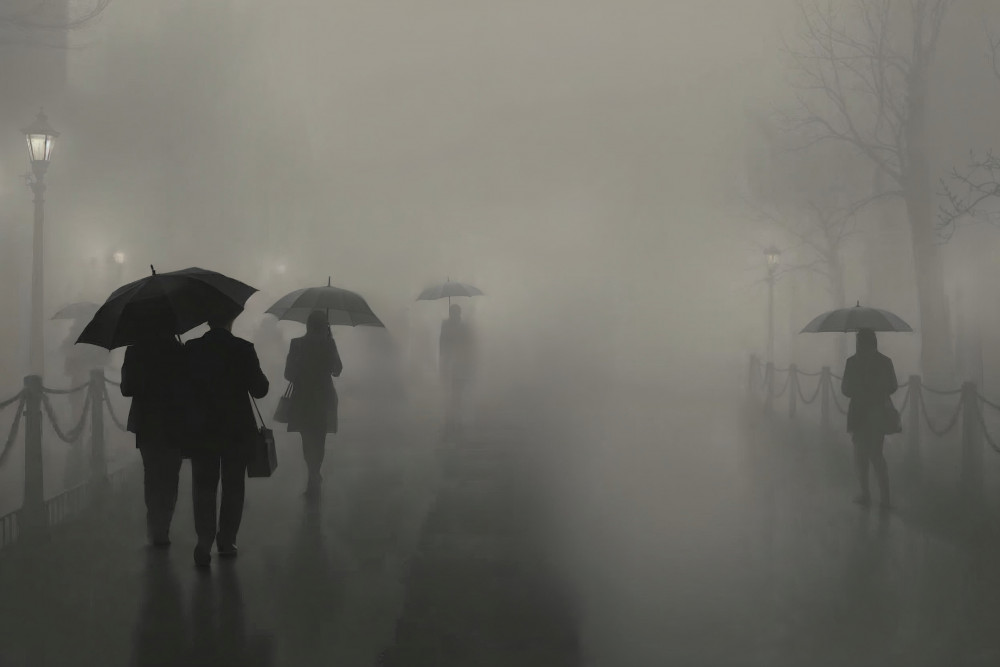 2nd place: by Giuseppe Satriani
2nd place: by Giuseppe Satriani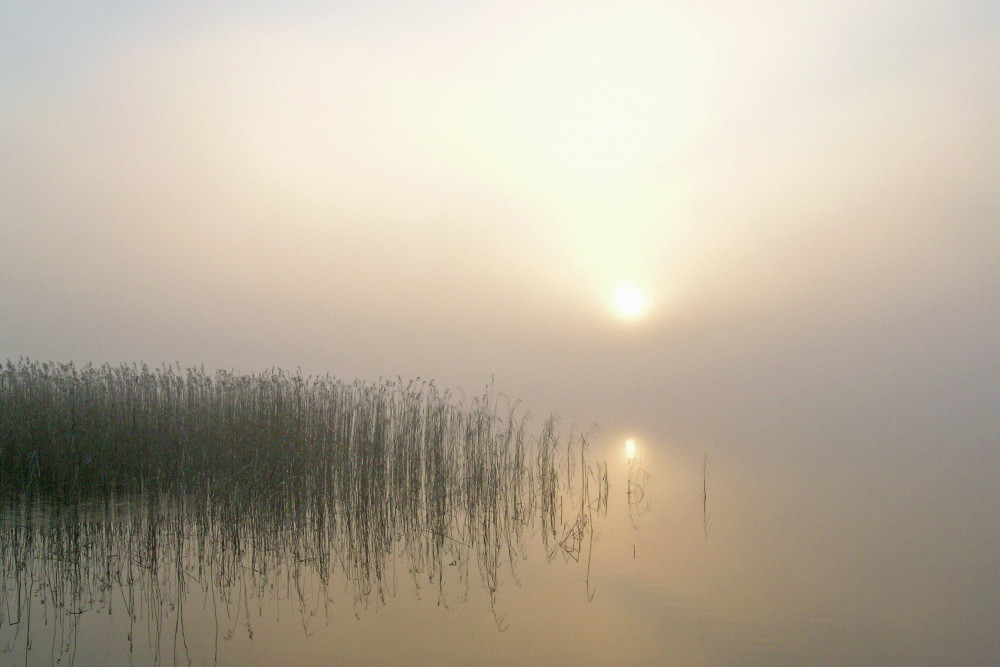 by Franke de Jong
by Franke de Jong |
 | Cicek Kiral CREW Congratulations...
|
 | I am mesmerized by the beautiful photographs that were selected, all worthy of this great recognition. Congratulations to all the featured photographers and the runner-ups!! |
 | Miro Susta CREW Wonderful idea for excellent photos, congratulations to all winners on excellent photo work, and appreciation to all participating members for best efforts 👌 |
 | Subhajit Das PRO Beautiful moody atmospheric images. Congratulations to all authors. |
 | Lucie Gagnon CREW Beautiful atmospheric images. Congrats to the winners and all participants. |
 | Adrian Donoghue PRO lovely collection |
 | Izabella Végh PRO Bella collezione di fotografie della nebbia. grazie ai fotografi. |
 | Wanghan Li PRO Moody and inspiring! Learning! Congratulations on all the works involved! Thanks a lot for sharing! |
 | Wonderful collection, congrats to all the participants!!! Thanks a lot, dear Yvette! |
 | Angelika Vogel PRO Congratulations to all of the artists with their excellent works! |
by Yvette Depaepe
Published the 6th of October 2025
This months' featured exhibition is titled 'The Horizon Within' by Silvia Dinca
I invite you to explore this profound and thoughtful exhibition, which is expressed through magnificent images. Each one is 'food for thought'.
This exhibition which will be exposed on our opening page / Gallery throughout October 2025.
Click here to see the entire exhibition: [971] The horizon within by Silvia Dinca
To trigger your curiousity, here is a short selection of images out of this exhibition.
 |
 | Gila Koller PRO Wonderful exhibition with wonderful creative photos Silvia!! my best compliments!! |
 | Marius Cinteza CREW Beautiful exhibition and portfolio! Many congrats, Silvia! :-) |
 | Yun Thwaits PRO So Beautiful artwork! Thank you dear Yvette! Congratulations Silvia! |
 | Dazhi Cen PRO Creative images. |
 | Elizabeth Allen CREW Beautiful, creative portraiture. Congratulations, Silvia, and thanks to Yvette. |
 | Eiji Yamamoto PRO Thank you so much for sharing such an inspiring exhibition with great works!! |
 | Raceala Elena PRO Wonderful!! |
 | Angelika Vogel PRO Special, impressive works, Yvette! Congratulations Silvia for these wonderful works! |
 | Jane Lyons CREW What a profound and beautiful gallery. Thank you Silvia for sharing this and Yvette for bringing it to us. |
 | beautiful art. |
by Editor Jane Lyons
Edited and published by Yvette Depaepe, the 3rd of October 2025
Rows and floes of angel hair
And ice cream castles in the air
And feather canyons everywhere
I’ve looked at clouds that way
Joni Mitchell
A cloud is defined as a “visible mass of water droplets or ice crystals suspended in the atmosphere."
As a photographer, I would define clouds as nature’s greatest gift to the visual arts.
‘So Dutch’ by Saskia Dingemans
‘The Spring Bliss’ by Shenshen Dou
They provide poetry and mystery and evoke a wide spectrum of feelings: power, fury, fear, fantasy, intensity, and ethereal beauty.
‘StormRoad’ by Marcel Egger
‘BEHIND THE REALITY’ by Franziskus Pfleghart
They convey joy and hope when the sun bursts through or dread and fear when the absence of light becomes foreboding.
‘rainbow ends’ by Ambra
‘Amongst the clouds …’ by Yvette Depaepe
Using clouds to create atmosphere or using clouds as the main element of a photograph is something worth exploring.
‘everybody hurts’ by Hari Sulistiawan
‘SUMMER HEAT’ by Patrick Ems
Not only do clouds provide visual beauty and atmosphere, but they also furnish a photographer with diffused and controlled light; a ready made Lightroom that drifts and shifts and allows time to compose and make a meaningful photograph.
Clouds are an asset not only to landscape photographers, but also to anyone photographing exteriors and interested in creating atmosphere with diffused light.
Atmosphere tells the story.
‘Waiting fort he Storm’ by Stefan Eisele
Personal touch, if you don't mind ... :-)
A photo of my cats, Vivian and Bean in front of Stefan Eisele's photograph 'Waiting for the Storm' which is on a wall in my home.
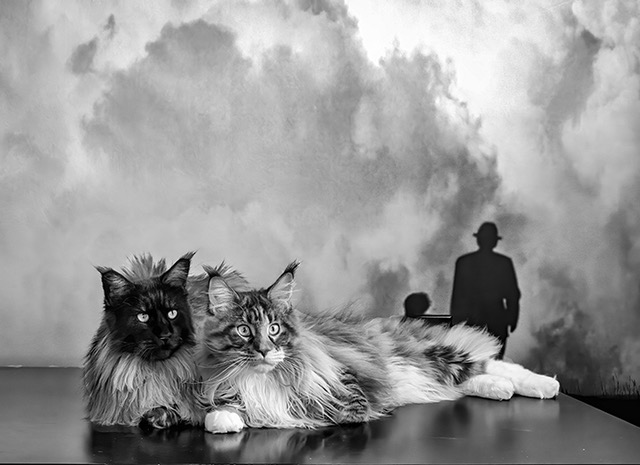
Technically:
To capture clouds, it is important to choose camera settings carefully, avoiding over- and under-exposure.
White balance is an important factor in deciding whether you want snowy white clouds or clouds that reflect colors in the sky.
Polarizing Filters can dramatize clouds by restricting light waves from the lens.
Long exposure can work when there is very little wind. If the clouds are low and moving quickly, what a long exposure reveals is anybody's guess.
In post-processing, drop a graduated filter in Lightroom, followed by Contrast, Clarity and Saturation in Camera Raw.
The Clarity setting helps separate the clouds from the sky, if used judiciously.
Lastly, clouds are equally effective and profound in both black and white or in color.
Every picture tells a story. This is a celebration of clouds!
‘Ladder 2’ by Hadi Malijani
‘Printemps perdu’ by Sebastien DEL GROSSO
‘Wonderful view’ by Nic Keller
‘Cloud-Farm’ by Christine von Diepenbroek
‘Jumping Jack’ by Christine von Diepenbroek
‘Prelude To The Dream’ by Hengki Lee
‘The Tree and the Cloud’ by Andreas Wonisch
‘Sheep in the Clouds’ by Elizabeth Allen
‘Red and Rusty’ by Þorsteinn H. Ingibergsson
‘There is nothing new under the sun’ by janini (Zhana Topchieva)
 |
 | Jorge Pimenta PRO Congratulations on this remarkable article about an essential dimension in photography, dear Susta. I deeply thank you for choosing one of my compositions to illustrate some aspects of your thesis. Best regards to you, dear Susta, to you, dear Yvette, who keep presenting us with excellent editorial initiatives, and to all 1X photographers! |
 | Imi Koetz PRO Outstanding photographs !! Congratulations to all ! |
 | Gila Koller PRO Wonderful photographs, very interesting article. Thank you! |
 | Stefan Eisele PRO Great article and thanks for sharing. |
 | Subhajit Das PRO Stunning photographs. Very interesting article. Thank you for sharing! |
 | Wanghan Li PRO Beautiful and fantastic works related with clouds! Eye-opening for me! Thanks a lot for sharing! |
 | Sonya Liu PRO It is truly beautiful and amazing. The sky looks magical with those clouds. Thanks for sharing. |
 | Dazhi Cen PRO Stunning pictures. |
 | Miro Susta CREW Very interesting and inspiring article, accompanied by stunning photos, thank you Jane and Yvette |
 | Izabella Végh PRO Mi piace tanto questo articolo veramente molto bello, con fotografie eccezionali. Grazie mille. |
 | Jacob (Jian) Xu CREW Wonderful story with fabulous images, Congrats to all artists! Thanks Jane and Yvette for sharing! |
 | Eiji Yamamoto PRO Thank you so much for a very inspiring article with great photos! |
 | Excellent |
 | WOW, what an impressive article with stunning photos, it is a feast to the eyes! My sincere congratulations to the featured photographers for their inspiring and superb work. 👏👏👏👏 |
 | Nic Keller PRO Superb article with wonderful photos. Thank you very much for choose my Photo! |
 | Hadi Malijani PRO Thank you for an incredibly beautiful and impressive article. |
 | Shenshen Dou PRO Enjoy reading this interesting article, it combines romantic with technical of clouds delightfully. Each of the selected pictures shows a precious personal vision and story! Thanks Jane and Yvette brought this beautiful article to us! Thanks for chosing my work! |
 | Fantastic works !! |
 | Molly Fu APA PRO Beautiful collections and excellent article, thanks for sharing! |
 | Great article and images! |
 | Hari Sulistiawan PRO Great articles, thank you for choose my photo, greeting!! |
 | Caroline Bomers PRO Such a beautiful collection of cloud images! Congratulations to all. Thanks for sharing these artworks. |
 | Elizabeth Allen CREW This is such a stunning article and collection of images full of atmosphere and diversity. Thank you very much, Jane, and more so for including one of my photos that brings back precious memories. I am very honoured. I love your cats and the Joni Mitchell quote! Thanks as always of course to Yvette. |
 | Ria Groot Zevert PRO Fascinerende beelden. Met verwondering bekeken! Mooi samengesteld. |
 | Angelika Vogel PRO An amazing, artistic portfolio! Congratulations to all of the great artists! |
By Editor Michel Romaggi in collaboration with the author Theo Decker
Edited and published by Yvette Depaepe, the 1st of October 2025
‘ritratto di fanciulla’
Could you please give us more details on how you created the photo 'Ritratto di fanciulla'?
I used one light only: a beauty dish at a 45-degree angle to the side, but pointing very low so that it touched the stand.
Perspex with water droplets. Nothing new.
I used a Nikon Z7 with a Z 24-120 f4 lens (which I almost always use) at 100 mm, 100 ISO, 200 speed and f8.
I modified the full spectrum with non-dense IR filters at 550 nm in order to capture IR light as well as other wavelengths.
I swapped the red and blue channels, but didn't invert them completely to ensure a reddish atmosphere emerged.
I lowered the contrast curves in the dark part of the histogram, as well as the lights and whites, to create a darker atmosphere. These are minimal adjustments, but I increased the clarity significantly. Nothing else.
You have photographed many women, but today it seems that you are focusing on portraits. Could you explain this change?
In 2018, I set up a small studio (6 meters x 4 meters, 3 meters high) close to the office, and started shooting with strobe lighting.
While practicing with lots of models' portfolios, I simultaneously developed artistic personal projects. For years, these were mainly fine art nudes, but I am now finding portraiture very satisfying. It's a kind of evolution. I find portraits more communicative.
‘hands’
How do you select your subjects, how do you shoot them, and how do you treat them in post-production? Could you explain what you're looking for with the different staging options you use? Is it purely aesthetic, or is there more to it than that?
A photo can be considered successful when it has its own soul. When it communicates a mood or emotion. When a portrait works, it captures the essence of the subject. Of course, sometimes I don't have the key, or I can't find the lock, and in the end, the door to the soul remains closed.
‘ritratto di ragazza’
I like simplicity. I like dark tones, shadows and an intimate atmosphere. I don't care about the wardrobe, art or props departments. For me, a still should work with as few props as possible.
The model must feel comfortable. I talk to the model a lot before and during the shoot. The choice of music is important. I always play what she wants to hear, according to the style of the shoot. For a portrait of a young girl, for example, she asked me to play Coldplay. We started with that, but then it turned into a Mozart Requiem.
‘imaginary portrait’
I chose the girl because of her sweet and sincere, almost languid, eyes. Although I didn't know her beforehand, when I saw her portfolio, I knew there was a lot to discover behind those eyes.
To conclude this fascinating interview/tutorial, could you tell us about yourself and your relationship with photography?
I have always loved music and photography. When I was 14, my room smelled of developing and fixing. I have worked in the video and photography industry for years (too many now!), in the production department alongside directors, lighting cameramen and photographers of all levels: normal ones, some mediocre and some legendary.
It's incredible when the level is really high and the artist remains simple, humble and kind.
‘reddish’
‘mellow yellow’
 |
 | Eiji Yamamoto PRO Thank you so much for this inspiring interview with great photos! |
 | Marion Keijzer PRO Bijzonder mooi en een goed eerlijk verhaal, Theo Ik ben fan. |
 | Theo Decker PRO thank you! |
 | Nice |
 | Tse Luk PRO love the mood, the selective focus, the atmosphere. 2 thumbs up |